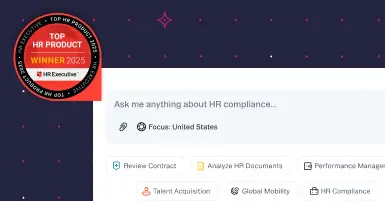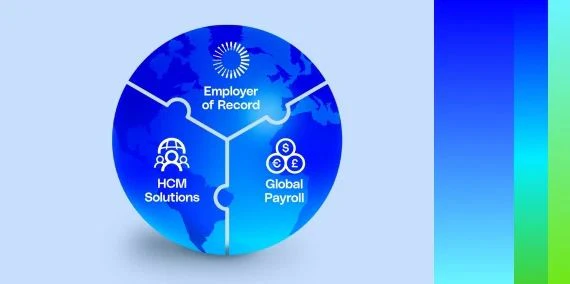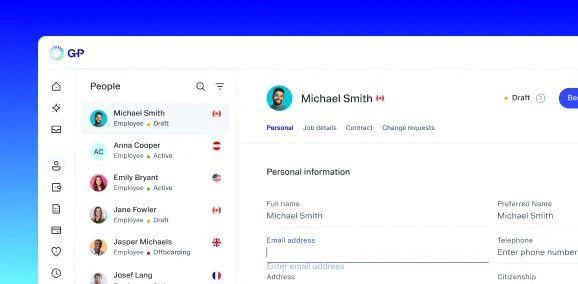The H-1B visa has been used by U.S. employers looking to hire specialized, technical talent in fields like healthcare, tech, and finance. But recent governmental policy has changed the financial landscape for companies relying on the program.
If your company is worried about the new H-1B fee, there’s a chance to turn the USD 100k visa problem into a global talent opportunity.
Understanding the 2025 H-1B fee increase
On September 19, 2025, a presidential proclamation introduced a dramatic increase to the cost of new H-1B visas.
Before, H-1B visa costs ranged from USD 2,000–10,000. But under the new rules, the fee for a new application has jumped to USD 100,000. This fee is a one-time, nonrefundable payment that applies to the upcoming 2026 lottery cycle and any new petitions submitted after September 21, 2025.
Who is most affected by the H-1B visa cost increase?
For many, the cost spike throttles their ability to hire new H-1B talent. This is a major hurdle for smaller organizations that are unlikely to have legal entities in other countries.
Challenges securing H-1B visas
H-1B visas allow U.S. employers to temporarily hire skilled international workers in "specialty occupations" that require a high level of specialized knowledge. Even when application fees were lower, the process was complicated and time-consuming —without guaranteed success.
In addition to the USD 100,000 fee, companies face challenges with H-1B visas like:
-
Employers are legally required to pay the visa fees. If USCIS discovers the employee paid them, the visa may be denied.
-
Denials for initial employment have been rising in recent years. Approval isn’t guaranteed, as the H-1B visa is lottery-based.
-
Only around 85,000 new visas are approved annually. There’s an annual cap of 65,000 regular visas, and an additional 20,000 for those with advanced U.S. degrees. Applications usually exceed the number of visas available, requiring random lottery selection.
With skyrocketing costs and the uncertainty of changing regulations, many businesses are looking for H-1B visa alternatives to fill critical skills gaps.
Employer of record (EOR) as an H-1B visa alternative
Hiring global employees with an EOR like G-P is one of the most effective alternatives to the H-1B visa program. G-P EOR lets you onboard, manage, and pay talent in 180+ countries — no entity (or visa) required.
Here’s how partnering with an EOR solves the new H-1b challenges.
Eliminate visa costs and uncertainty
The EOR model sets companies free from changing regulations that stall hiring plans. G-P EOR offers 100% certainty.
-
Bypass the USD 100,000 fee: You can onboard a new hire in days without needing application fees or immigration experts. The H-1B visa process has an upfront government fee of USD 100,000, while the EOR model has a USD 0 upfront government fee – only a monthly platform fee.
-
Deepen the talent pool: With an EOR, you can hire where top talent lives. Instead of limiting your search to the U.S, you can broaden your recruiting to 180+ countries.
-
Easy hiring: Bypass the typical time, cost, and risk associated with entity setup. The time to onboard with an EOR is days compared to 6-12 months for an H-1B visa.
Cut costs and strategize your budget
An EOR can do more than help you save on H-1B visa fees. If employees stay in their home countries, their salaries won’t have to match the U.S. market, and those savings can be reinvested into your business. An EOR offers a cost-effective strategy, helping companies secure specialized talent at a more affordable price.
Ensure compliance and manage risk
Compliance with local labor laws is vital when hiring globally. An EOR helps you manage risk by offering competitive local benefits packages to international employees. EORs employ international talent on your behalf and handle all employment responsibilities like contracts, payroll, benefits, compliance, and tax filings.
Access global talent (without the visa fee)
The September 2025 increase in H-1B visa costs – coupled with a complex process and limited available visas – mean companies need to look for a better way to hire specialized talent. G-P EOR isn’t just a strategic path forward, it’s one of the most cost-effective.
Access highly skilled global professionals without having to navigate the increased costs and uncertainty of the H-1B visa program.




















